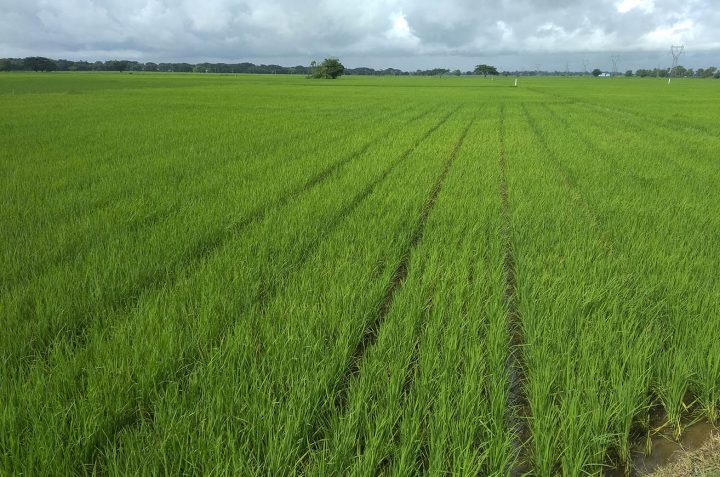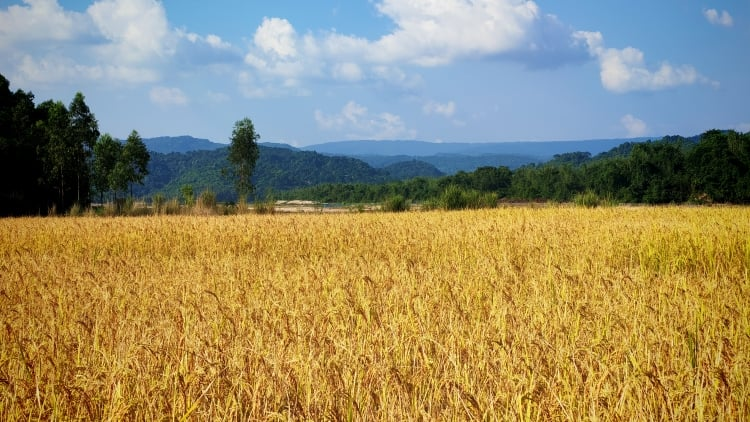Tags
Rangpur farmers frustrated over low price of Aman paddy
- Saiful Alam, Additional Deputy Director of Rangpur DAE, said on Sunday that compared with previous seasons, the yield of Aman paddy in Rangpur is good this year
- Instead of 3 metric tons per hectare, the yield has reached 3.25 metric tons
- With a demand of 250,000 tons for the district’s 3.5 million people and a production of nearly 550,000 tons, he expects that an additional 300,000 tons of rice will help meet the food demand of other districts

Liakat Ali Badal
Despite the bumper yield of Aman paddy this season, farmers have got frustrated over low price of their produce in Rangpur.
Farmers said that their production cost has increased significantly per bigha due to high-interest loans from moneylenders, abnormally high prices of fertilisers, high cost of pesticides, and diesel for irrigation. As a result, the farmers said, if the current market price of paddy continues, they cannot make much profit.
During the visit to Mominpur, Haridebpur, and Nazirhat in Sadar upazila, it was found that there was ripe paddy on vast tracts of land. Sharecroppers Monowar Hossain, and Moktar from Mominpur said that although urea fertiliser was available, the prices of DoP and other fertilisers were extremely high. They also needed supplementary irrigation during land preparation and transplantation of seedlings. Labour costs have also risen as labourers now charge Tk500-600 per day. All these have significantly increased production costs.
They also said that it is even difficult to find labourers for harvesting and threshing paddy, and wages have risen to Tk600–700. After harvesting, threshing, and drying, expenses increase even more. Thus, it is difficult to recover the total production cost. The current maximum market price of paddy is Tk1,200 per maund. At this price, they cannot make a profit. Only by selling straw can they earn an additional Tk3,000–4,000.
Farmers Shasul Haque and Anwarul Islam from Haridebpur said that because they cultivated paddy after taking out loans from moneylenders and NGOs at high interest, they are now forced to sell paddy at very low prices. They said that the fair price for one maund of paddy would be at least Tk1,500–1,600. But in the markets, paddy is currently selling for Tk1,200 per maund.
Marginal farmers like Rakibul Islam and Sarwar Mia from Mominpur said that the Food Department does not procure paddy directly from farmers. They purchase paddy from large millers and traders. Taking advantage of this, traders buy paddy from farmers at very low prices. As a result, farmers are forced to sell paddy cheaply, and the traders make huge profits.
When small and marginal farmers or sharecroppers bring paddy to government warehouses, officials refuse to buy it. They tell them to come through the agriculture department, but during listing at the upazila and union levels, sharecroppers’ names are not included. They look only for landowners. In reality, however, it is the small farmers and sharecroppers who cultivate most of paddy. Therefore, their names never appear on the purchase lists, and they never receive fair prices.
An official from the Department of Agricultural Extension, speaking on condition of anonymity, told this correspondent that if the Food Department purchased paddy directly from farmers immediately after the harvest, the farmers would benefit. Although the government has announced its plan for paddy procurement, they have yet to start buying paddy directly.
Small and marginal farmers are forced to sell their paddy right after harvest as they need to repay loans and cover various expenses. Besides, large traders hold back from buying paddy in the hope of obtaining paddy at even lower prices. This prevents farmers from receiving fair prices for their produce.
Aman production has, however, exceeded the target set by the authority concerned. Due to the favorable weather and less supplementary irrigation than usual, agricultural experts believe that after meeting the district’s own food demand, more than an additional 350,000 tons of Aman paddy can be supplied to meet the demand of other districts.
According to the Rangpur Department of Agricultural Extension (DAE), the target for Aman cultivation this season was set at 166,723 hectares of land, while cultivation actually covered 166,915 hectares. The target for rice production was set at 543,412 metric tons. The department reported that harvesting is underway, and as of Sunday, more than 70% of paddy across the district’s eight upazilas have been harvested. Per hectare, more than 3.25 metric tons of rice have been produced.
The DAE also stated that due to favourable weather conditions this year, there was plenty of rainfall. As a result, farmers needed very little supplementary irrigation. Timely rainfall allowed farmers to prepare land, transplant seedlings, and apply fertilisers and pesticides without relying on irrigation machines—leading to the bumper Aman yield. Rangpur district’s annual demand for rice is about 250,000 tons, while production has reached nearly 550,000 metric tons.
Saiful Alam, Additional Deputy Director of Rangpur DAE, said on Sunday that compared with previous seasons, the yield of Aman paddy in Rangpur is good this year. Instead of 3 metric tons per hectare, the yield has reached 3.25 metric tons. With a demand of 250,000 tons for the district’s 3.5 million people and a production of nearly 550,000 tons, he expects that an additional 300,000 tons of rice will help meet the food demand of other districts.
https://www.dhakatribune.com/bangladesh/nation/397221/rangpur-farmers-frustrated-over-low-price-of-amanPublished Date: November 25, 2025






